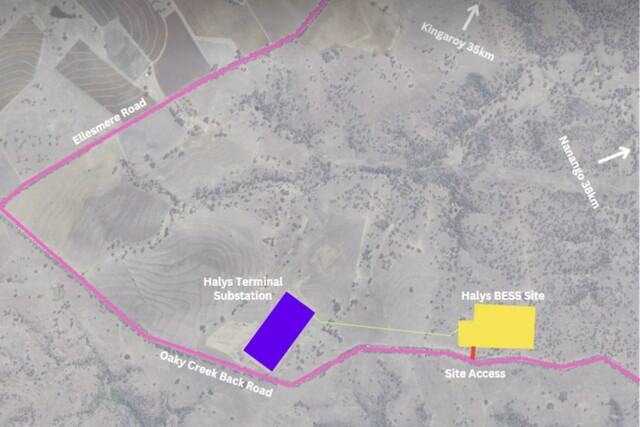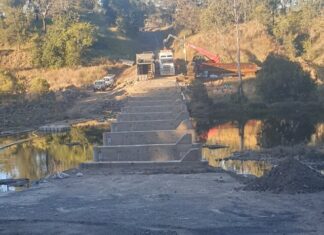Another clean energy project is pegged for the South Burnett.
Community consultation sessions were held before Easter for the Halys BESS project -a large scale battery energy storage system planned for Ellesmere near the powerlink substation.
The project is run by Akaysha Energy, an Australian developer with offices in Melbourne, Sydney, North America and Japan.
Akaysha representative-led sessions were held for community engagement consultations on Friday, 22 March in Nanango and another in Kingaroy on Saturday, 23 March.
“As for every consultation session, the main objective was to present the Halys BESS project, its key benefits to the local community and to pose Q and A with local community, stakeholders and members,” an Akaysha spokesperson said.
“Akaysha also directly engaged via door knocking and letterbox drops within the Nanango and Kingaroy regions.”
The spokesperson for Akaysha shared that there were about 70 community members who attended the drop in sessions.
“All of which were highly engaged and were asking questions around the community engagement process, local jobs and economic investment, the project timelines and support for the wider South Burnett region’s electricity supply and generation.”
The battery project is only in its early consultation stage, with Akaysha aiming to submit the development application to the South Burnett Regional Council this month.
The proposed construction start is pegged for the first quarter of 2026.
The Halys BESS is planned to be situated on rural land about 35 kilometres south of Kingaroy, adjacent to Powerlink’s Haly’s terminal substation in Ellesmere.
The BESS will occupy an area of 10 hectares near Oaky Creek Back Rd, reducing the visual impact of the battery.
The project’s fact sheet outlines that the BESS will have a capacity of about 500MW and provide up to four hours of 2000MWh of energy storage, delivered using class-leading battery technology.
The project will include the installation of battery units, inverters, cooling systems, and other equipment, as well as a high voltage transmission line connecting to Halys Substation.
Ecological assessments will ensure design and siting considers the local environmental conditions.
The BESS is designed to secure Queensland’s energy supply, by providing storage of excess energy generated during off peak hours and is a cost effective way to integrate renewable energy into electricity networks.
The fact sheet outlines that around 150 supporting jobs from construction to operation will be provisioned through the project, boosting the local employment needs and economy.
Akaysha claims these batteries will play a role in managing the security of electricity supply and addressing the intermittency of renewables.
“The proposed BESS will work hand in hand with recent solar farms approved and built in the area,” the fact sheet stated.







